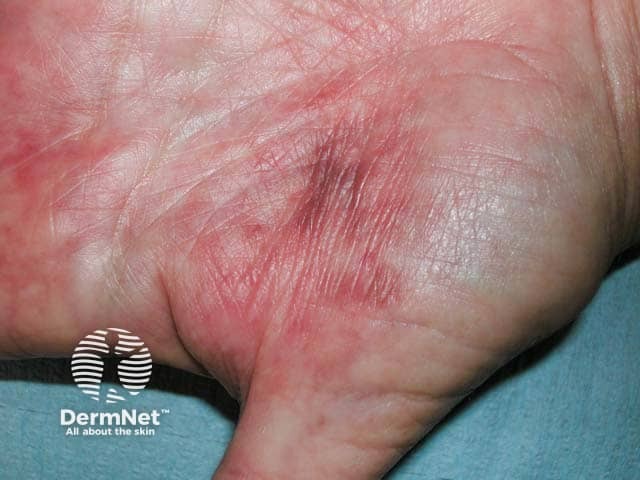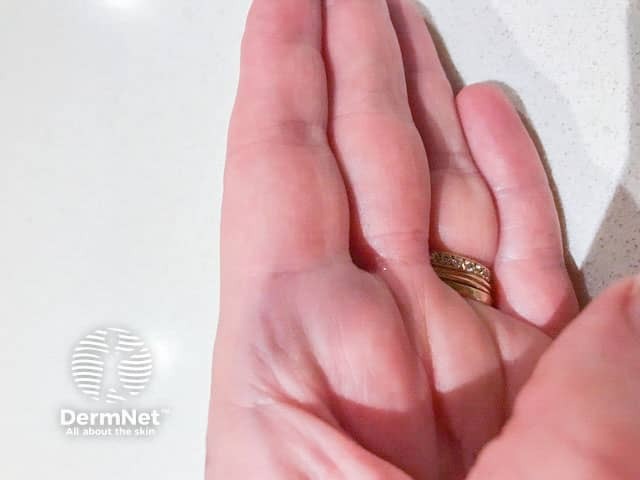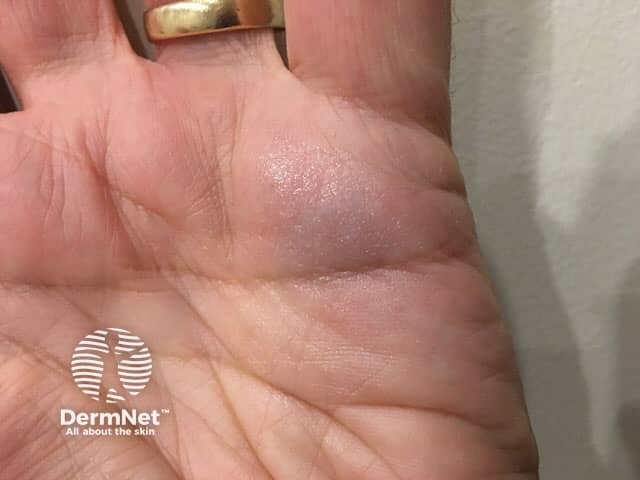Main menu
Common skin conditions

NEWS
Join DermNet PRO
Read more
Quick links
Author: Dr Ian Coulson, Consultant Dermatologist, East Lancashire NHS Trust, Lancashire, UK. Copy edited by Gus Mitchell. September 2021
Introduction Demographics Causes Clinical features Variation in skin types Complications Diagnosis Differential diagnoses Treatment Outcome
Achenbach syndrome is a paroxysmal recurring painful bruising of the finger(s) or palm, not associated with serious underlying conditions.

Achenbach syndrome: finger

Achenbach syndrome: finger

Achenbach syndrome: finger
See more images of Achenbach syndrome topic page
Achenbach syndrome has been predominantly reported in middle-aged females, with a median age of onset of 48–50 years (range 22–76).
Although said to be rare, a study of 802 members of the general population aged 18 to 84 years in three regions of France found a prevalence of 12.4% in women and 1.2% of men. It is possibly more common in those with a history of Raynaud phenomenon and chilblains, however is not associated with smoking.
Achenbach syndrome is a subcutaneous bruise probably due to minor fragility of capillaries or a small vein in the palmar skin. Preceding minor trauma may be recalled in 30% of cases such as sweeping, handwashing of clothing, or cycling.
There is no associated serious cause for easy bruising such as a clotting disorder or vascular abnormality.
Achenbach syndrome characteristically follows minor trauma, although this is often not recalled.

Achenbach syndrome: thenar eminence

Achenbach syndrome: palm

Achenbach syndrome: palm
Achenbach syndrome has been reported in Caucasians and Asians. The discolouration may be less obvious in skin of colour.
None.
Achenbach syndrome is diagnosed clinically on the typical history and clinical presentation. Many patients have undergone exhaustive investigations for clotting disorders and ischaemic events, all of which are normal/negative.
There is no specific treatment.
Achenbach syndrome is a benign condition with spontaneous resolution of lesions without sequelae. Episodes can recur with minor trauma, with an average frequency of recurrences of 1.2 per year.